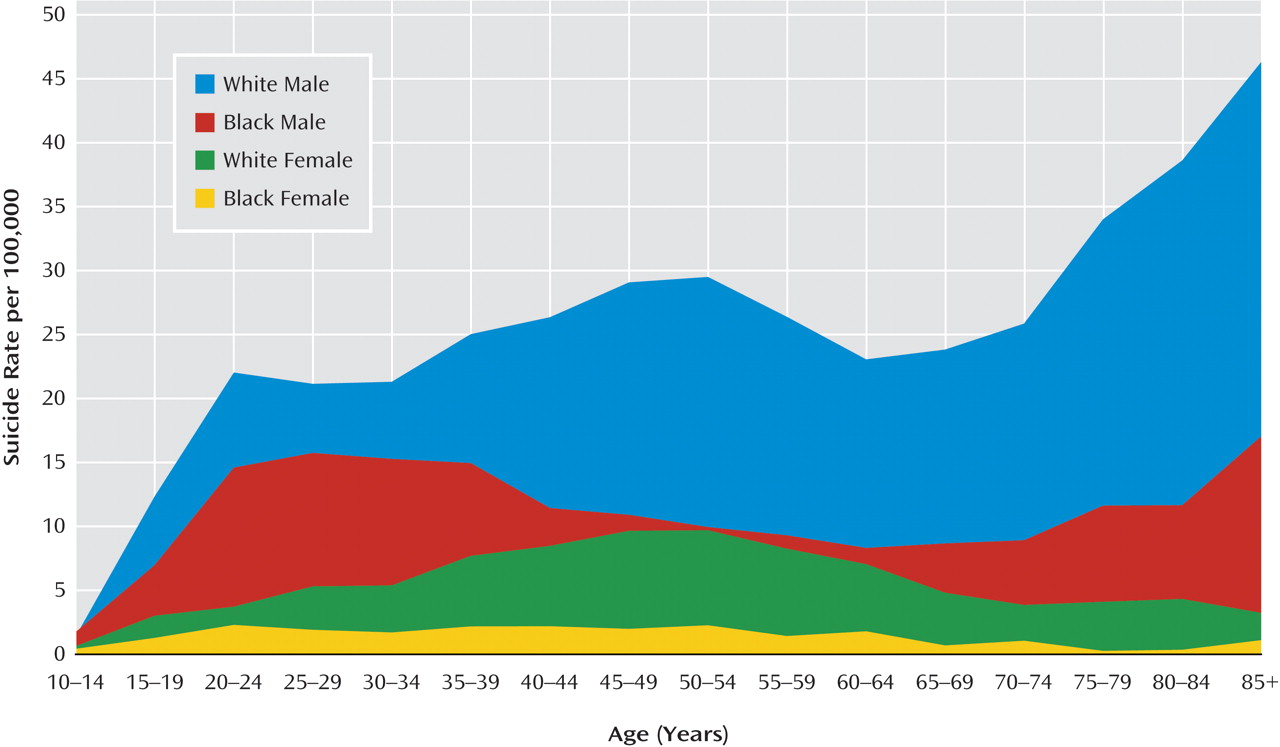In most countries of the world, older adults kill themselves at higher rates than any other age group. Given that the leading edge of the large post-World War II “baby boom” cohort will reach the age of 65 in 2011, demographers predict a rapid rise in the number of seniors taking their own lives in subsequent decades. The need for effective approaches to late-life suicide prevention is pressing.
As a basis for development of prevention strategies, retrospective case-control studies have defined factors that place older adults at risk for suicide. Psychiatric illness is present in almost all older adults who take their own lives, most often an affective disorder. Physical illness and functional impairment as well as social factors, primarily family discord and social isolation, are independent risk factors as well
(1) .
Although it is uncommon for elders to seek psychiatric care, studies show that up to three-quarters of older adults who die by suicide were seen by their primary care provider in their last month, and up to a third in their last week of life
(1) . Primary care, therefore, represents an important venue for mounting late-life suicide prevention interventions. Yet it is also well established that affective illness is frequently undiagnosed and inadequately treated in primary care practice. Based on the chronic disease model and building on work by Katon and others
(2), the Prevention of Suicide in Primary Care Elderly: Collaborative Trial (PROSPECT) was designed to improve outcomes of depression—and thereby reduce the rate of suicidal ideation—by employing a collaborative stepped-care approach. In this issue, Alexopoulos and colleagues report outcomes after 24 months of the PROSPECT intervention
(3) .
The study design included random assignment of 20 primary care practices to deliver either the intervention or care as usual. From over 9,000 patients screened, 599 patients age 60 or older with a diagnosis of major or minor depression were selected. Depression care managers assigned to the active treatment practices collaborated with primary care physicians in the detection, algorithm-based treatment, and outcome assessment of depressed patients over 24 months of care. As an alternative to antidepressant medications, care managers could provide interpersonal psychotherapy to patients as indicated.
The results reported here show that patients in the intervention arm had a significantly greater decline in suicidal ideation than usual-care patients over 24 months and that a significantly greater proportion of patients with major depression who received collaborative care achieved remission at the 4-, 8-, and 24-month follow-up assessments. Improved outcomes were associated with the greater likelihood of receiving antidepressants and/or psychotherapy, but only in patients with major depression; those with minor depression were equally responsive to the depression care management protocol and usual care.
The significance of the PROSPECT study’s findings derives in part from their demonstration of improved outcomes over an extended follow-up period. Depression is a chronic and recurring illness, and knowing the impact of an intervention over longer periods is critical to understanding the strengths and weaknesses of the model. True, the intervention must continue to be refined: in the intervention arm of the PROSPECT study, the rate of remission among patients with major depression was 45%. Nonetheless, the benefit to depressed elders and their families seems clear. Access through a care manager to algorithm-driven treatment, decision support for the primary care provider, and systematic follow-up to monitor treatment response and support patient adherence all contribute to maintaining high treatment utilization rates and thereby reducing depressive symptoms over an extended period.
It is promising, too, that patients in the intervention arm had a significantly greater decline in suicidal ideation than usual-care patients. The close associations between suicide and major depression in later life and between suicidal ideation and self-destructive behavior imply that the study’s findings are relevant to the public health goal of reducing the number of suicide deaths among seniors.
Even so, it is hard to anticipate what impact the PROSPECT intervention would have on late-life suicidal behavior, either attempts or completed suicides, if it were widely disseminated. Suicidal ideation is a complex construct, and its measurement raises as many questions as it answers. Because of the low base rate of suicidal ideation and the complexity of its measurement, PROSPECT study analyses focused on “active suicide desire.” This construct included items concerning the wish to die and the wish to live, the connection of which to suicidal behavior is uncertain. For which elderly depressed primary care patients are thoughts of death indeed symptoms of their affective illness, and for which patients is a waning will to live best understood as a developmental response to the challenges of aging? And perhaps most important, who among them will go on to translate thought into potentially lethal action? As yet, research has no answers for these questions; the relationship of suicidal ideation to attempted and completed suicide in later life remains obscure.
There are other challenges to late-life suicide prevention that the PROSPECT study helps to highlight. Epidemiologic data on completed suicide, the ultimate objective of preventive interventions, indicate that men are at far greater risk than women, a disparity that is even more pronounced in the old-old age group
(4) (
Figure 1 ). Among the U.S. population age 75 and older, the rate of suicide is almost 10 times greater for men than for women (35.7 versus 3.7 suicides per 100,000 in 2006). This gender disparity in suicide rates reflects in part the tendency of elderly men to use the most immediately lethal means, firearms, to end their lives; in the United States, over 79% of suicides among elderly men are by firearm. Because over 71% of PROSPECT study participants were female, the study sample can tell us little about the effectiveness of the intervention on reducing suicidal ideation specifically in the highest risk group of elderly depressed men.
The several studies that have tested interventions specifically targeting completed suicide in older adults raise additional concerns. Although none used a randomized controlled design, it is important to note that where there was a signal indicating possible effectiveness, it tended to be for women only. The Gotland study, for example, found that systematic education and training of primary care providers in the detection and treatment of depression on the island of Gotland resulted in significantly fewer suicides (all age groups) compared with other regions of Sweden
(5) . Subsequent analyses, however, revealed that the effect was specific to women
(6) . In an evaluation of the Tele-Help/Tele-Check intervention, which provided supportive services to at-risk elders in Padua, Italy, De Leo and colleagues
(7) too found that a significantly lower standardized mortality ratio in seniors who received the intervention was wholly accounted for by reduction in suicides among women. More recently, Oyama and colleagues conducted a series of multifaceted interventions to increase detection of depression, referral to care, and engagement in supportive social activities for rural Japanese elders
(8 –
12) . In each of five studies, they found significantly fewer suicides among women who lived in counties that received the intervention relative to demographically comparable counties that did not. Among men, however, the intervention appeared to have had a significant effect in only one of the five studies (10).
Alexopoulos and colleagues’ work raises new hope not only for successful treatment of depression in later life but also for the effective reduction of suicidal ideation and therefore of suicide. Yet questions remain. How do we do better? How do we ensure that the impact on depression translates to lower rates of suicide? What, if any, modifications are needed to ensure that men, the highest risk group in later life, are effectively engaged and treated by collaborative care interventions? There is work to be done.


